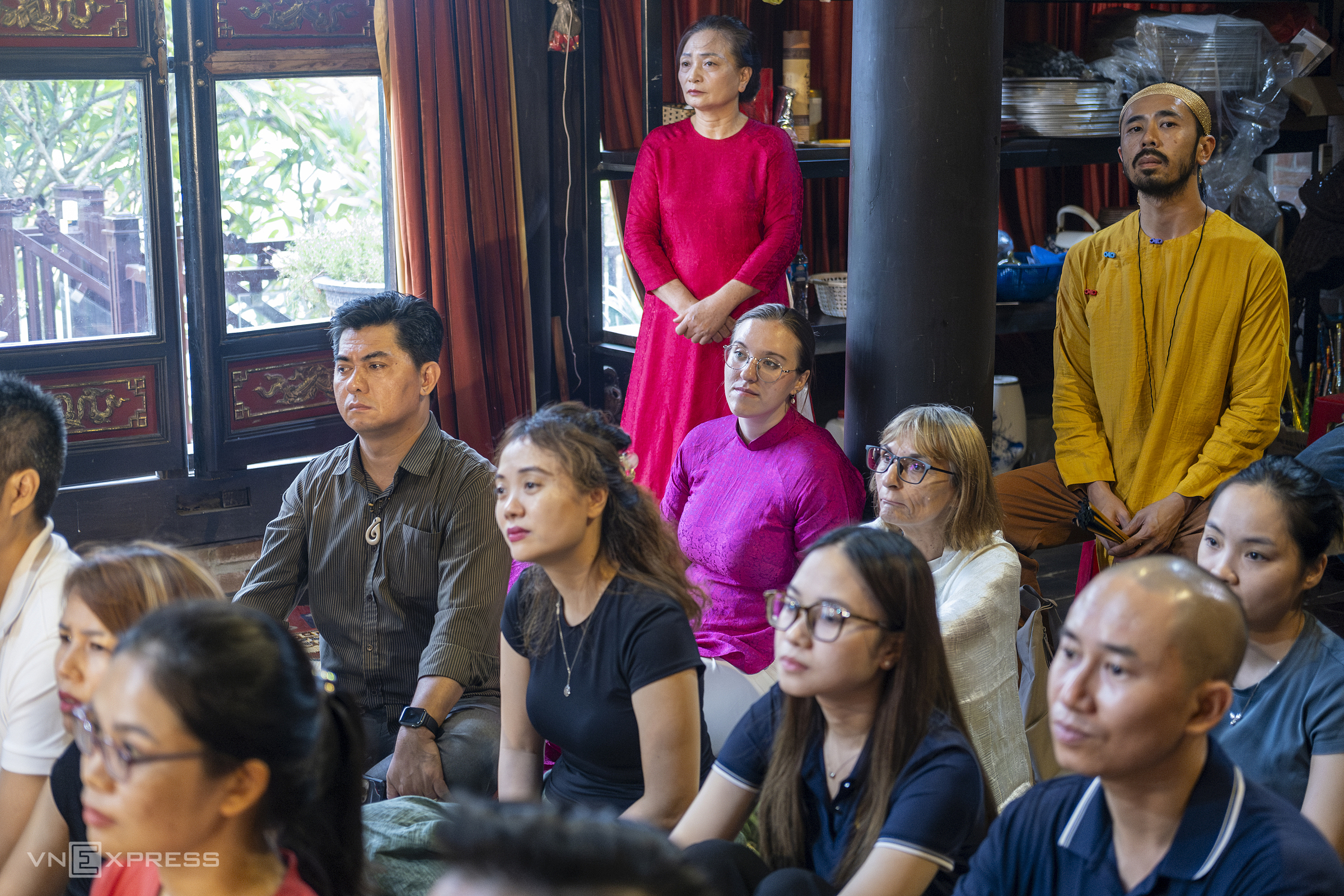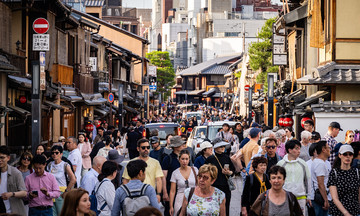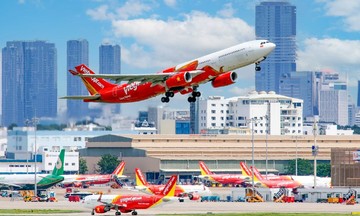Vietnam's tourism sector faces one of its greatest challenges yet: welcoming 25 million international visitors in 2025, as set by Government Resolution 226. However, current figures suggest a long road ahead. Experts agree that this final sprint requires decisive and innovative solutions.
 |
Western tourists watch a Hau Dong performance. Photo: Giang Huy |
Western tourists watch a Hau Dong performance. Photo: Giang Huy
The 2.75 million challenge
According to the General Statistics Office, Vietnam welcomed nearly 14 million international visitors in the first 8 months of the year, reaching only 56% of the target. This means that in the remaining 4 months, the industry must attract over 11 million visitors, averaging 2.75 million per month.
This is a record number, exceeding the historical peak (over 2 million visitors per month) that Vietnamese tourism has ever achieved. “This target is very challenging, very ambitious,” admitted Pham Van Thuy, Deputy Director of the Vietnam National Administration of Tourism, at a tourism conference on 18/9.
Sharing the same view, Vu The Binh, Chairman of the Vietnam Tourism Association (VITA), described it as a "very heavy task," requiring "the entire industry's strongest efforts."
The challenge stems not only from the pressure of the numbers but also from internal issues. Deputy Director Pham Van Thuy frankly pointed out that many of Vietnam's tourism products are outdated, 10-15 years old, and no longer attractive. “We must change our approach, sell what tourists need, not what we have,” Thuy emphasized.
 |
South Korean tourist Jung Woo Sung (left) takes a photo with his family during their trip to Da Nang. Photo: Nguyen Dong |
South Korean tourist Jung Woo Sung (left) takes a photo with his family during their trip to Da Nang. Photo: Nguyen Dong
The race for solutions
Facing time pressure, businesses and associations are seeking solutions. Vu The Binh stated that VITA is focusing on two main directions. The first is to strengthen communication on digital platforms, targeting key and emerging markets. The second is to organize fam trips (international tourism surveys), directly promoting new products to major travel agencies abroad, hoping they can bring tourists to Vietnam in the final quarter of the year.
Besides traditional methods, product innovation is seen as key. Cuisine is emerging as a global trend, and Vietnam has great potential. Nguyen Thi Khanh, Vice President of the Ho Chi Minh City Tourism Association, believes that cuisine can become a key tourism product and suggests localities should collaborate to create tours based on unique culinary cultural values.
However, product innovation also requires a new mindset. Pham Ha, CEO of Lux Group, believes Vietnam needs to abandon the "one-size-fits-all" approach. He argues that inviting representatives from various markets to participate in the same survey program is ineffective.
“We should invite Indian partners to follow a separate itinerary, Chinese partners a different one, according to their preferences,” Ha explained. The CEO believes that only by "speaking the customer's language," understanding their needs, and meeting those desires, can the ability to attract tourists be truly high.
Focusing on key markets
To optimize resources for this final sprint, the tourism industry will focus on markets with the fastest growth potential. Nearby markets like China, South Korea, Japan, and Taiwan are prioritized. Next is the ASEAN region, especially the Philippines, Indonesia, and Malaysia. More distant markets such as Russia, Western Europe, Northern Europe, especially countries granted unilateral visa exemptions by Vietnam, are also emphasized.
To increase competitiveness, Pham Ha suggests Vietnam can learn "tricks" from neighboring countries like Thailand, such as offering round-trip domestic air tickets or shopping vouchers to international tourists.
While acknowledging the immense difficulty of the 25 million visitor target, Ha remains optimistic. "It's entirely possible; anything can happen," he said.
However, the CEO also emphasized another important perspective: the success of the tourism industry should not be measured solely by "counting visitors."
In addition to increasing visitor numbers, we need to pay special attention to product quality so that visitors spend more. Increasing total tourism revenue from international visitors is also a major success," Ha concluded. This is also the direction for sustainable development when the goal is not just record numbers but the real value that the green economy brings.
Phuong Anh












